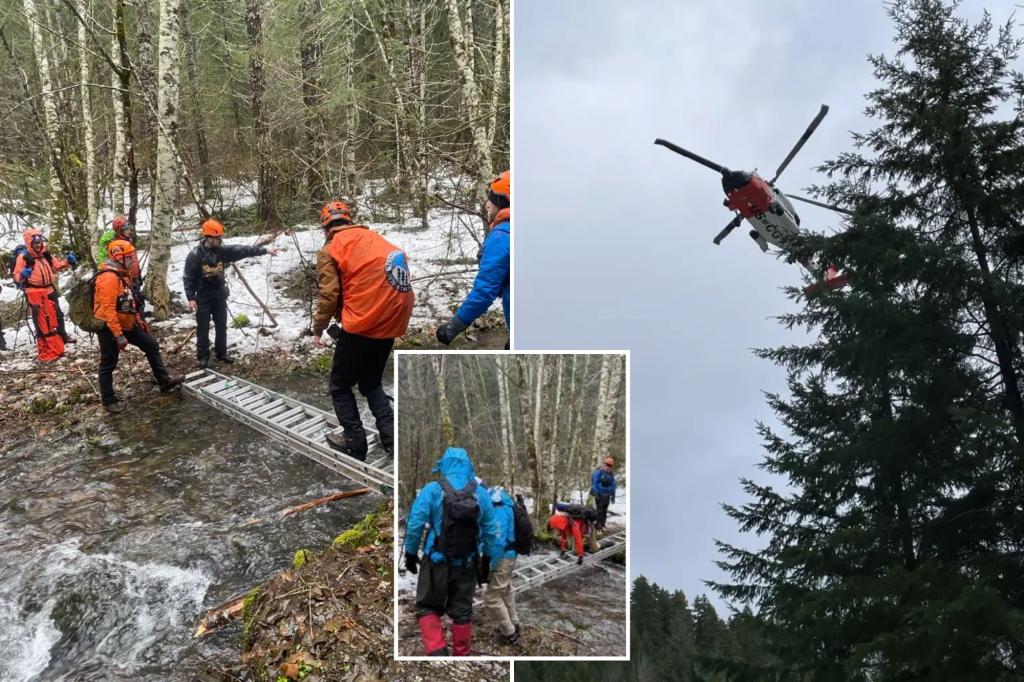The mysterious deaths of two Oregon men in the Gifford Pinchot National Forest have brought a somber end to a Christmas Eve Sasquatch expedition. The 59-year-old and 37-year-old, whose identities have yet to be released, were reported missing by a family member in the early hours of Christmas Day when they failed to return from their outing. After a three-day search involving a significant volunteer effort and advanced technology, their bodies were discovered in a heavily wooded area, approximately 150 miles northeast of Portland, Oregon. The Skamania County Sheriff’s Office has preliminarily attributed the cause of death to exposure, citing the prevailing weather conditions and the men’s apparent lack of preparedness for the challenging environment they encountered.
The Gifford Pinchot National Forest, spanning a vast area across Southern Washington state, is known for its rugged terrain, dense forests, and unpredictable weather patterns. Winter in the region can be particularly harsh, with temperatures plummeting below freezing and heavy snowfall common. Venturing into such an environment without adequate preparation, including appropriate clothing, survival gear, and navigational tools, can quickly lead to life-threatening situations. Exposure, the suspected cause of death in this case, occurs when the body loses heat faster than it can produce it, leading to hypothermia and potentially fatal complications. The men’s apparent underestimation of the potential dangers inherent in their chosen pursuit may have contributed to their tragic fate.
The search for the missing men involved a significant deployment of resources, highlighting the dedication and commitment of search and rescue teams. Sixty volunteer personnel, aided by canine units, drones, and ground teams, combed the vast wilderness in search of any signs of the missing duo. The Coast Guard also contributed to the effort, utilizing infrared technology to scan the area from the air. This collaborative approach underscored the gravity of the situation and the importance of utilizing all available resources to locate individuals lost in challenging environments. The extensive search eventually led authorities to the men’s vehicle, located off Oklahoma Road near Willard, on the southern border of the national forest. Camera recordings provided crucial information in pinpointing the vehicle’s location, guiding search teams to the heavily wooded area where the bodies were eventually discovered.
The men’s ill-fated expedition was motivated by their search for Sasquatch, a mythical creature believed by some to inhabit the forests of the Pacific Northwest. While the existence of Sasquatch remains unproven and relegated to folklore, the allure of the unknown continues to draw individuals into remote and often hazardous areas. This tragic incident underscores the importance of prioritizing safety and preparedness when venturing into the wilderness, regardless of the motivation. A healthy respect for the power of nature and a realistic assessment of one’s abilities are essential for ensuring a safe and enjoyable outdoor experience.
The search for Sasquatch has long captivated the imagination of many, fueling countless expeditions and investigations into its purported existence. While the creature’s reality remains firmly in the realm of myth and legend, the pursuit of this elusive cryptid often leads individuals into remote and challenging environments. The vastness and rugged terrain of the Pacific Northwest forests, while alluring to adventurers, pose significant risks to those unprepared for the unpredictable conditions. In this case, the men’s focus on finding Sasquatch may have overshadowed the need for careful planning and thorough preparation for the rigors of a winter expedition in a challenging environment.
This tragedy serves as a poignant reminder of the importance of responsible outdoor recreation. While the allure of the unknown and the thrill of exploration can be powerful motivators, prioritizing safety and preparedness should always be paramount. Understanding the potential dangers of the environment, equipping oneself with the necessary gear and knowledge, and informing others of one’s plans are crucial steps for mitigating risks and ensuring a safe return. The deaths of these two men serve as a stark reminder that the wilderness, while beautiful and captivating, can be unforgiving to those who underestimate its power.

